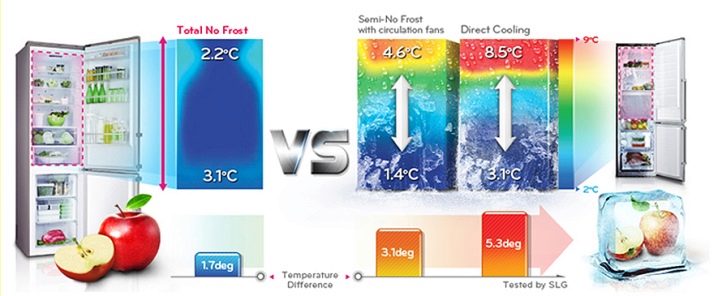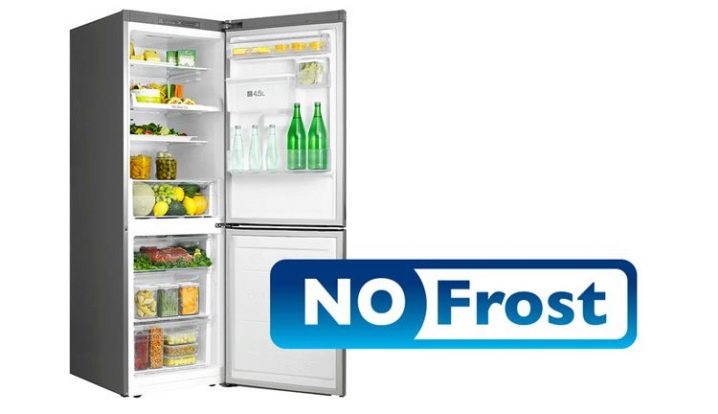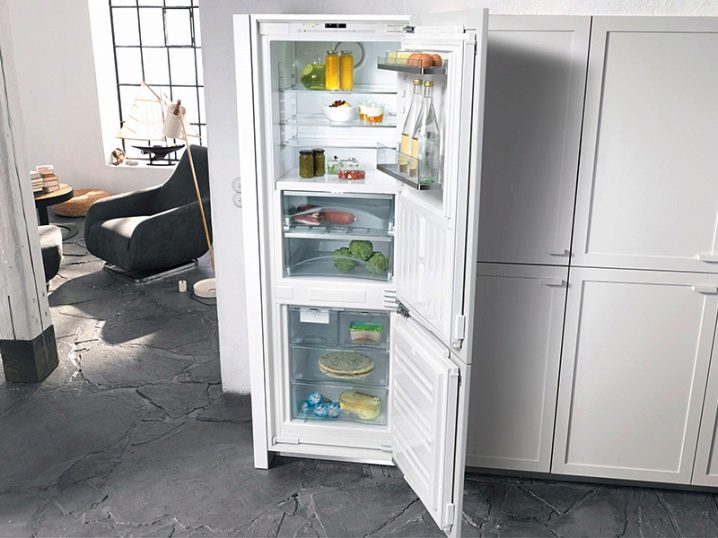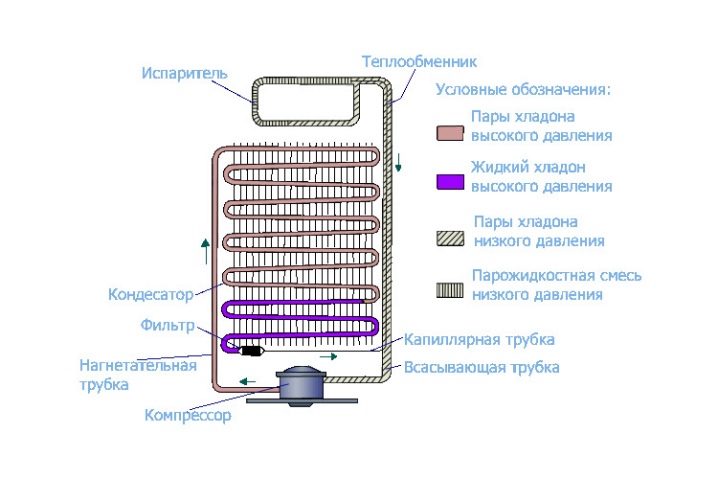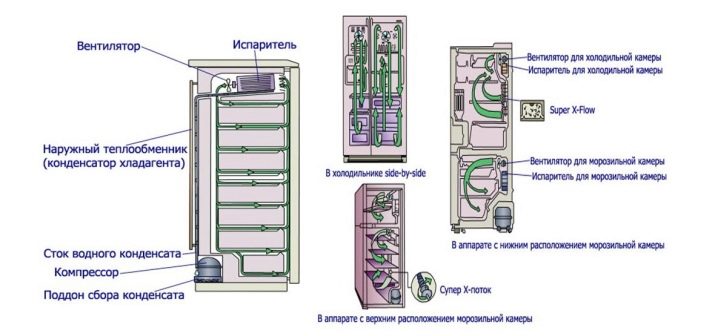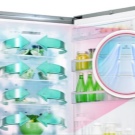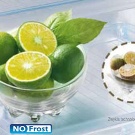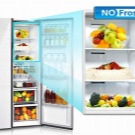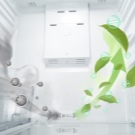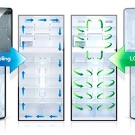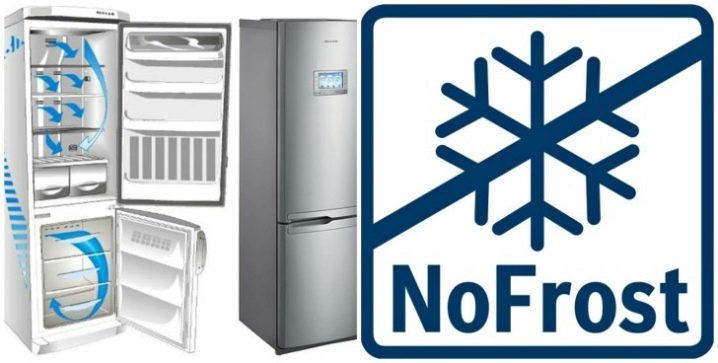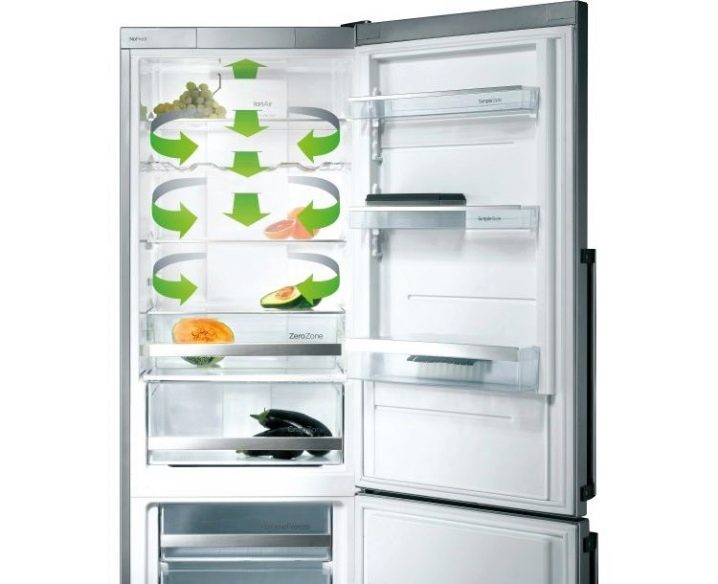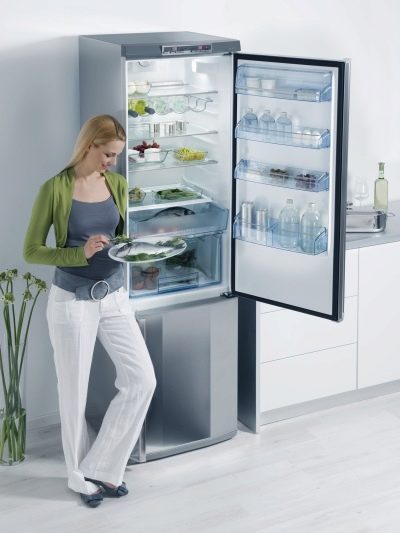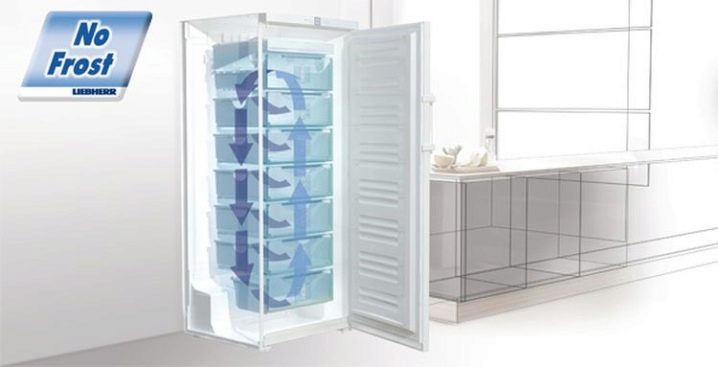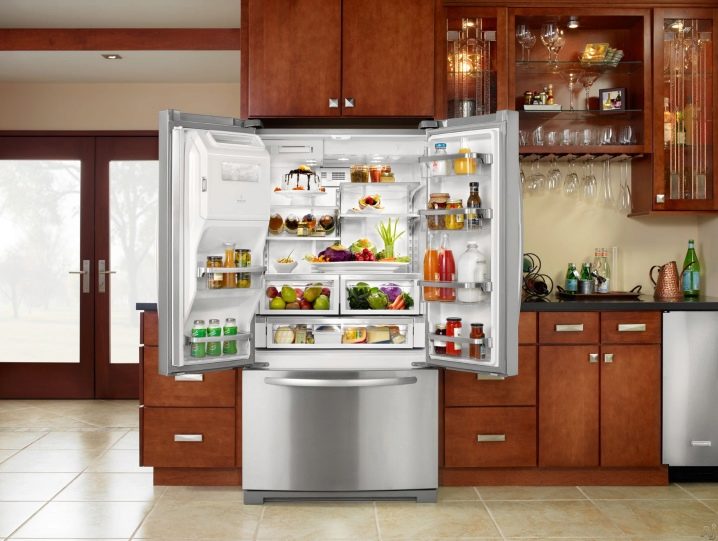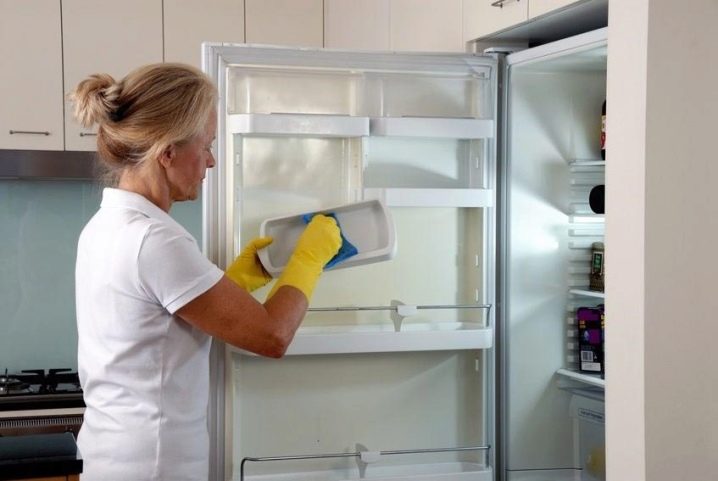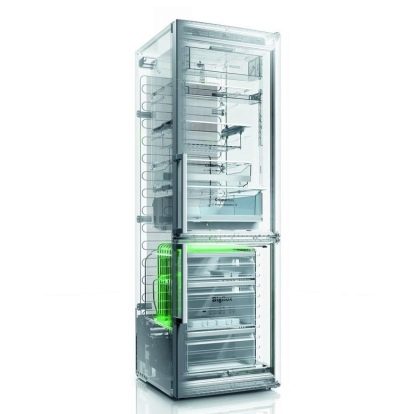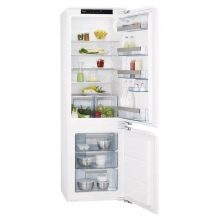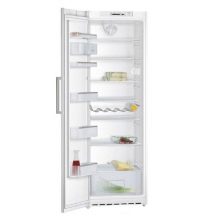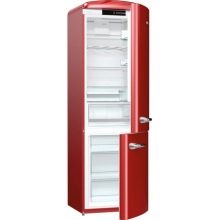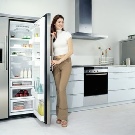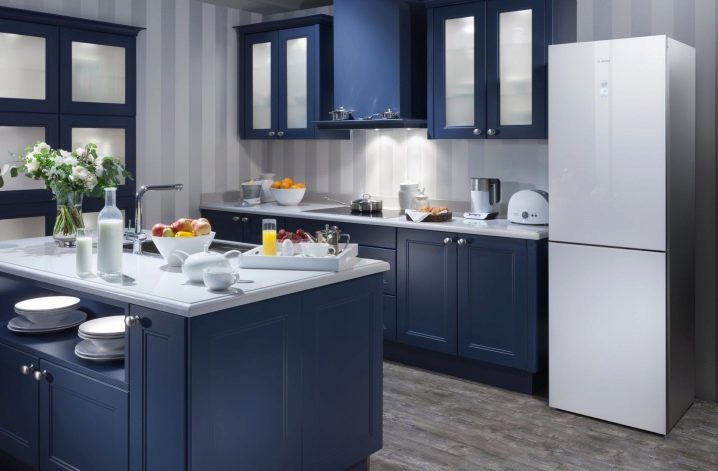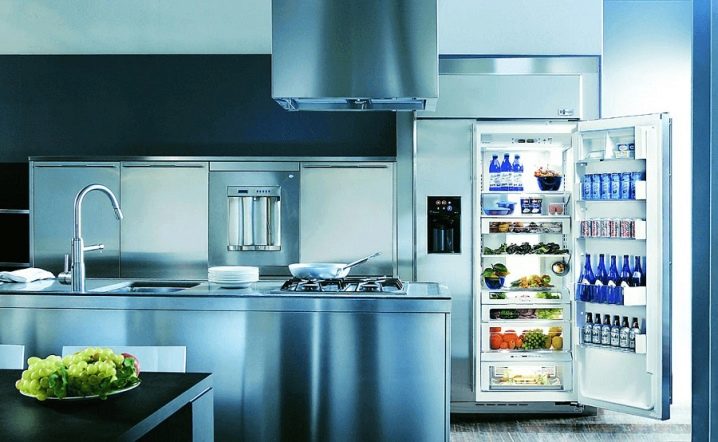Which is better: drip system or No Frost

Refrigerators of the old generation constantly needed regular defrosting. This was due to the fact that the ice produced by these devices gradually accumulated in the cooling system. Fortunately, progress does not stand still, and instead of the old models of cooling devices come more new and modern counterparts.
If the old-generation refrigerators were called drip thanks to their cooling method, then the modern generation of these devices proudly bears the name "No Frost", which translated from English means "no frost".
So which refrigerators are better and what is their difference? We will try to answer these questions in this article.
Principle of operation
The most common cooling system is drip. The common people are also known as "weeping."
The principle of operation of this system is based on the creation of condensate, which is formed on the back surface of the refrigeration unit.Often during operation of the refrigerator, this condensate freezes, which causes ice to accumulate.
"No Frost". This cooling system has no fundamental differences from the previous one. Used all the same method of creating condensate on the back of the refrigerator. However, the entire system is actively ventilated with the help of fans installed in the refrigerating chamber. This allows water droplets not to freeze against the wall and eliminates the possibility of ice accumulation.
Advantages and disadvantages
Drip
Of course, one of the main advantages of the drip system is an affordable price. In addition, these refrigerators are characterized by a large volume of refrigerators and a wide range. In terms of operation, these devices are quite quiet and consume less electricity than their counterparts.
Old models of cooling devices required completely manual defrosting (turn off the equipment, wait for the ice pieces to thaw, manually remove all of them and clean the chamber). Drip defrost significantly reduces the list of necessary actions. Everything is done very simply: water is drained and the water vessel is installed in its original place.
Modern technology, consisting of many small mechanisms and equipped with automation, often breaks. Short circuits in the network, differences in atmospheric humidity and temperatures can contribute to this. Units using the freeze-freezing mechanism work reliably and reliably.
The disadvantages include the unevenly distributed temperature throughout the chamber, the periodic accumulation of ice on the back wall and the long recovery of the previous temperature after defrosting.
Defrosting such refrigerators usually takes much more time than automated counterparts.
In addition, during defrosting it will be necessary to completely disconnect the device from the network. This means that food stored in the freezer will gradually melt. Some units can perform this process without stopping the operation.
"No Frost"
This system has several advantages: low maintenance needs, quick freeze option, no accumulation of ice on the back wall. In the refrigerators of the "No Frost" model, the temperature is evenly distributed throughout the chamber.For example, the temperature between the upper and lower shelves will be no more than 2 degrees Celsius. Whereas in models with a drip system, this temperature difference can reach five to six degrees. Maintaining a constant temperature allows products to be stored longer and stay fresh.
The "No Frost" system is distributed not only in refrigerators, but also in freezers. This is also an advantage over drip analogues.
Thanks to ventilation, the temperature in the refrigerator after opening the door recovers faster.
The design of the chambers implies good ventilation. Therefore, after closing the door, the previous temperature is restored much faster.
One of the drawbacks of such devices is quite noisy work. This is due to the constantly running fans. However, it is worth noting that it is increasingly possible to find models on the market that work very quietly.
Due to its design, the devices of the "No Frost" line lose the competition to drip machines due to their small capacity.
Also, these models of cooling devices require a large amount of electricity.Although the difference from the drip is not so huge, but still it can be attributed to the shortcomings.
These refrigerators are a bit more expensive than their drop counterparts. Therefore, such devices can not be considered a budget option.
Common Misconceptions
According to some people, in refrigerated appliances with the “No Frost” system, the food is dried. To some extent this is true, because there are fans installed in the refrigerator chamber. However, compared with drip analogues, the rate of drying products is not so great. In addition, modern refrigerators are often equipped with plastic containers that not only prolong the shelf life of food, but also do not allow odors to mix with each other.
Sometimes people are mistaken that refrigerators with the "No Frost" system do not need to be defrosted. Despite good ventilation, small pieces of ice still accumulate on the back of the chamber. Therefore, once a year it is recommended to turn off the chiller and clean the internal space.
Quite often you can find the myth of the dangers of the system "No Frost". This is pure fiction. The main components of refrigerators with this function are the samewhat are installed on analogues with drip system.
"Low Frost"
Not so long ago a new freezing equipment appeared on the market, called "Low Frost".
These models of devices are equipped with a new defrosting system. The main developer of this series of devices is considered to be the German company Bosch.
Recently, this system is actively used by such manufacturers of household appliances as AEG, Siemens, Gorenje.
One of the main differences between "Low Frost" and other models is the uniform distribution of the evaporator circuit throughout the outer frame of the freezer. As a result, products are evenly frozen.
Also, this unit produces very little ice, which allows defrosting as soon as possible. It should be noted that this system applies only to freezers.
Total
When comparing refrigerators, the main pros and cons of each type of appliance were given. Therefore, when purchasing a refrigeration unit, it is important to pay attention to this.
It is worth remembering: the last declared type of innovation (automation) in the issue of defrosting will be more important from the point of view of efficiency and time, because the user does not need to do the right thing to remove ice from the compartments: for him it will be done by the built-in work systems.
It should be understood that the more expensive types of devices "head on" ahead of budget options in terms of innovation. A technique with an automatic defrost system is of higher priority, since it is more efficient and takes much less time (because the owner does not have to deal with removing the ice from the compartments himself, which speeds up the defrosting process).
On the other hand, the defrosting of the refrigerator is not often carried out, but it is necessary to pay for the purchase (and possible repair) much smaller amounts than in another case. Manual defrosting is almost never used (only outdated models).
In addition, drip models need more frequent defrosting than their counterparts from the "No Frost" line. However, the drip system has been tested by time and is considered more reliable.
In any case, it is for you to choose. And this choice should be approached wisely, after weighing all the pros and cons.
